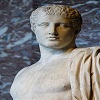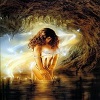Mount Olympus
Home of the Olympian Gods and the Supreme Court for human offenses
In Greek mythology Olympus was the home of the Twelve Olympian gods of the ancient Greek world.
In myth, Olympus formed after the gods defeated the Titans in the Titan War, and soon the place was inhabited by the gods. It is the setting of many Greek mythical stories.
The Twelve Olympian gods lived in the gorges, where there were also their palaces.
Pantheon (today Mytikas) was their meeting place and theater of their stormy discussions.
The Throne of Zeus (today Stefani) hosted solely him, the leader of the gods. From there he unleashed his thunderbolts, expressing his godly wrath.
The Twelve Olympians included also Hera, Hestia, Demeter, Poseidon, Athena, Apollo, Artemis, Hermes, Aphrodite, Ares and Hephaestus.
In Iliad Olympus is referred as great, long, brilliant and full of trees.
In Pieria, on Olympus' northern foot, the mythological tradition had placed the nine Muses, patrons of the Fine Arts, daughters of Zeus and the Titanide Mnemosyne:
Calliope (Epic Poetry), Clio (History), Erato (Love Poetry), Euterpe (Music), Melpomene, (Tragedy), Polyhymnia (Hymns), Terpsichore (Dance), Thalia (Comedy) and Urania (Astronomy).
In most of the stories where Mount Olympus is mentioned, Zeus and the other Olympians lived in palaces within the gorges that are prevalent on the mountain. It is here where the lives of the gods and goddesses fell into a rhythm similar to he way mortals lived.
They slept, ate, socialized, and ruled from the mountaintop. Some stories indicate that each of the gods and goddesses had their own palaces. Other accounts indicate that they all lived in a central palace. The following is an overview of the most commonly accepted structure to Mount Olympus.
All the gods and goddesses built their palaces within the gorges.
This is where the gods and goddesses did most of their socializing. It is also where the majority of their heated discussions took place. It is also the highest peak on the mountain.
Also known as the Throne of Zeus, this is where the King of the Gods sat. In the stories, Zeus unleashed his thunderbolts from this seat.
This is the mountain’s northernmost foot and where the nine Muses dwelled. The Muses were the patrons of the art, literature, and science.

IN MORE DETAIL:
Mount Olympus is the legendary home of the Olympian gods in Greek mythology, and is normally equated with the mountain of the same name found in modern day Greece.
Some say that Mount Olympus was an acropolis in the sky, found far above Mount Olympus, whilst others say the homes of the gods was found at the peaks of the physical mountain.
THE HOME OF THE GODS
If equated with the modern day Mount Olympus found on the border of Thessaly, then the mountain itself had a god, an Ourea, associated with it, but in Greek mythology it is of course most famous for being the home of the Greek gods.
Mount Olympus first became home for Greek gods during the Titanomachy, when Zeus used it as his main stronghold when fighting the Titans, who themselves were based upon Mount Othrys.
After the end of the Titanomachy, Mount Olympus would be regarded as an acropolis, but the citadel would also be built up with palaces; palaces of marble and gold, constructed with bronze foundations, each of which was normally said to have been made by Hephaestus.
THE PALACE OF ZEUS
At the heart of the Mount Olympus complex was Zeus’ palace, in front of which was a large courtyard surrounded by covered passages. This courtyard was of sufficient size to enable all the gods and gods of the Greek pantheon, many thousands in number, to gather together when Zeus called a full assembly of the gods.
Inside the walls of Zeus’ palace was a large central hall, paved with gold, this hall acted as both a council chamber as well as a feasting hall.
When operating as a council chamber, Zeus’ palace offered a panoramic view of the world, allowing the gods to see events on earth. Zeus though, could obscure the view with clouds as required, something he did during the Trojan War.
Off of the central hall, were bedchambers and storage rooms.
A SECOND SPOT FOR ZEUS ON MOUNT OLYMPUS
Zeus also had a second seat upon Mount Olympus, for above his palace, on a higher peak, there was a place where he alone went to; and from this place he could observe all that went on below.
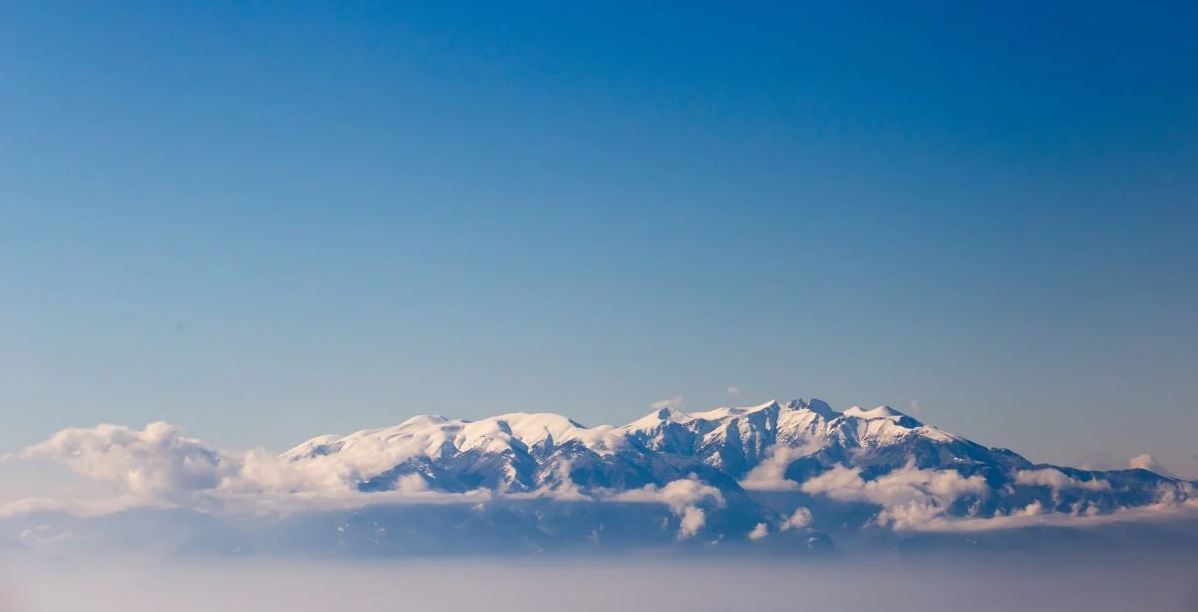
THE THRONES OF THE GODS
The council chamber was used by the Olympian gods predominantly, rather than the entire Greek pantheon. At one end of this central hall stood two thrones, one for Zeus, and one for his queen, Hera; and Robert Graves gave detailed descriptions of these thrones of the gods.
Seven steps of different colour led to the Egyptian black marble throne of Zeus. Zeus’ throne was adorned in gold, whilst overhead was bright blue canopy, mirroring the sky over which Zeus had dominion. On the right arm of the throne was an eagle made of gold with ruby eyes (a symbol of Zeus), in whose mouth was strips of tin, indicating lightning. On the seat of the throne was a purple coloured ram’s fleece, which Zeus could use to make rain.
Next to Zeus’ throne, but lower down, was Hera’s throne, reached by three crystal steps. Hera’s throne was made of ivory, with a full moon overhead, and adorned with golden cuckoos. Hera’s throne had a white cow skin which could also be used to make rain.
Down either side of the hall were a further 10 thrones, 5 on each side.
The next prominent throne belonged to Poseidon, and was second only in size to Zeus’. Poseidon’s throne was made from grey-green marble, and adorned with gold, mother-of-pearl and coral. Opposite Poseidon’s throne was that of Demeter, with a throne made from green malachite, and decorated with golden pigs and golden ears of barley.
Next to the throne of Poseidon was the throne of Hephaestus, the craftsman who made all the thrones of the council hall. Hephaestus made his own throne of all known metals and all known precious stones. Hephaestus also ensured that his throne could move as he desired.
Opposite Hephaestus, and therefore next to Demeter, was Athena’s throne, which was made from silver, and crowned with an array of violets. Next to Athena sat Aphrodite in a silver throne made to look like a scallop shell, into Aphrodite’s throne was inlaid beryl and aquamarines.
Opposite Aphrodite was the throne of Ares, made from brass and covered in a throw made from human skin. Next to Ares was Apollo, who sat on a throne of gold, covered in python skin, and Artemis sat opposite her brother in a silver throne, with a seat made from wolfskin. Hermes’ throne was next to Apollo’s, with Hermes’ throne made from one piece of rock, and opposite Hermes was the throne of Hestia, a rather plain throne made from wood and unadorned.
Hestia’s throne would later be replaced by Dionysus’, a throne made from gold plated fir wood.

FEASTING UPON MOUNT OLYMPUS
Mount Olympus though was not just a place of business and work, for work was, it seems, secondary to pleasure. Mount Olympus might have been hidden from view by cloud and snow, but in the Mount Olympus complex everyday was one of sunshine, devoid of wind, rain or snow.
The gods breathed in the heavenly air of Aether, not the air breathed or mortals, and partook in feasts where ambrosia and nectar, the food and drink of the gods, was served in abundance.
Food and drink, as well as being served by Hebe and Ganymede, came to the gods on automatons, tables and tripods, crafted by Hephaestus; whilst the gods were entertained by the Younger Muses, whilst the three Charites presided over the festivities.
RESIDENTS OF MOUNT OLYMPUS
The main residents of Mount Olympus were the 12 Olympians, Zeus, Hera, Poseidon (although he also had a palace beneath the surface of the Mediterranean), Demeter, Hestia, Aphrodite, Athena, Artemis, Apollo, Ares, Hephaestus and Hermes.
Later, these 12 deities would be joined by Dionysus, when he was elevated to Olympian status.
Hestia gave up her position so that Dionysus could become one of the 12, but Hestia remained an important figure on Mount Olympus, for she ensured that the hearths never went out, a sacred part of life in Ancient Greece and Rome.
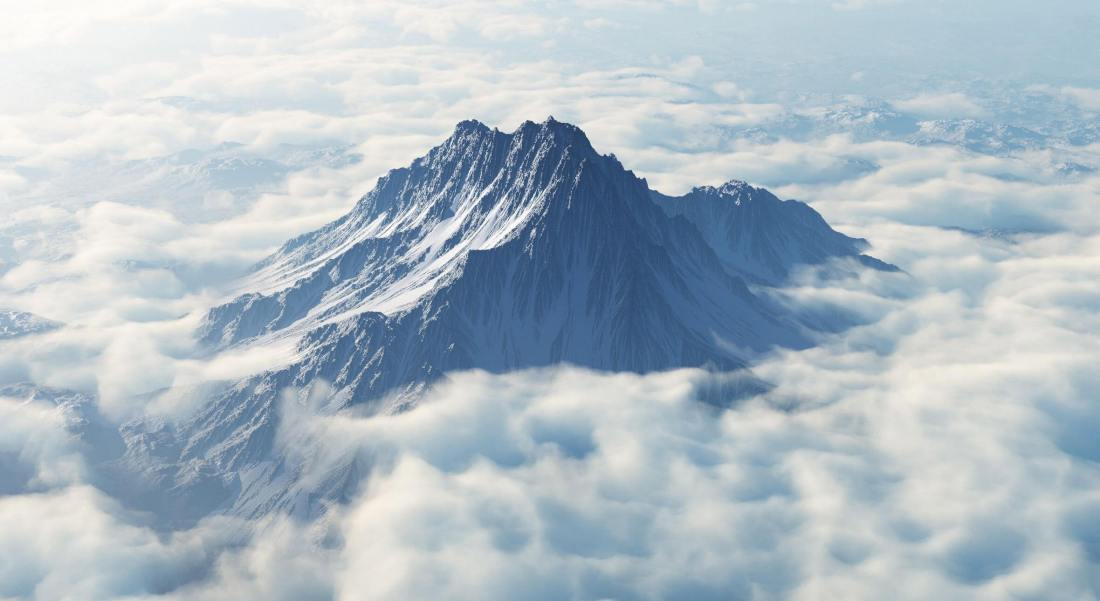
MORE RESIDENTS OF MOUNT OLYMPUS
The Olympian gods and goddesses did not live in isolation though, and a range of minor deities also lived upon Mount Olympus, at least part of the time.
Hebe, the daughter of Hera and Zeus was found there, and she was once the server of the ambrosia and nectar, although after Hebe married Heracles this role was given to the Trojan prince Ganymede.
Upon the apotheosis of Heracles, the son of Zeus came to live upon Mount Olympus, and then Heracles and Hebe had two divine sons, Alexiares and Anicetus. Heracles, Alexiares and Anicetus would become the physical defenders of Mount Olympus.
Eros originally lived in the palace of his mother, Aphrodite, and remained on Mount Olympus when he married Psyche. Ariadne likewise was said to live with her husband, Dionysus.
Zeus also kept a number of gods and goddesses close to him, with Cratus (Stregnth), Nike (Victory), Bia (Force) and Zelos (Rivalry), normally to be found close to his throne, as were Themis (Divine Law) and Nemesis (Retribution).
Close to Hera, was also Iris, the goddess of the Rainbow, who acted as messenger for Zeus’ wife. The nine Younger Muses and three Charites would also spend at least part of the time on Mount Olympus. The Charties would act as attendants to Hera and Aphrodite, and there were many other nymphs who did likewise for the other gods and goddesses of Mount Olympus.
THE STABLES OF MOUNT OLYMPUS
Mount Olympus was also home to a number of immortal horses, those that pulled the chariots of the various Olympian gods, although the most famous horse found in the Mount Olympus stables was Pegasus. The winged horse would carry the thunderbolts of Zeus into battle.
Alongside side these horses, in the stables of Mount Olympus, were also the four Elaphoi Khrysokeroi, the four golden hinds that pulled the chariot of Artemis.

GAINING ENTRANCE TO MOUNT OLYMPUS
Entrance to, and exit from, Mount Olympus was only achieved be passing through golden gates, or clouds of gates, these gates were guarded by the Horai, the Seasons, who would vet all those who tried to pass through; and again, some say that these gates were made by Hephaestus.
It was commonly said that no mortal ever got to see the acropolis of Mount Olympus. The highest peak of Mount Olympus is at 2917 metres, with many other peaks making up the mountain. The most elevated sections of Mount Olympus are often covered by clouds and snow, making it impossible for the nosy to look at the goings on of the gods.
The steeps side of Mount Olympus, and the dense forests found upon its slopes, prevented man from getting too close, and even if someone did get beyond the forests, then the mystical elements associated with Mount Olympus, would make it seem invisible to the mortal eyes of the uninvited.
It is though not strictly true to say that no mortal ever saw the palaces of Mount Olympus, for although Zeus prevented Bellerophon from flying to it, in the early days of man, mortal kings, including Ixion were welcomed there by Zeus, and partook of the feasts and banquets.
MOUNT OLYMPUS THREATENED
It was of course not just the inquisitive, or presumptuous, like Bellerophon, who sought to gain entry to Mount Olympus, for even after the Titanomachy the fortress like status of Mount Olympus was threatened.
The greatest threat to Mount Olympus came from Typhon the gigantic monster whose head touched the sky. All of the major gods, bar Zeus, fled Mount Olympus, in the face of the monstrous Typhon, but even Zeus struggled to stand fast against the giant. Eventually though, Zeus managed to banish Typhon to the depths of Tartarus, for Typhon was hit with a hundred lightning bolts.
Also the Aloadae, gigantic twin sons of Poseidon, piled mountain upon mountain in order to reach the palaces of Mount Olympus, for the Alaodae wished to make Artemis and Hera their wives. These two giants though were struck down by the arrows of Apollo.
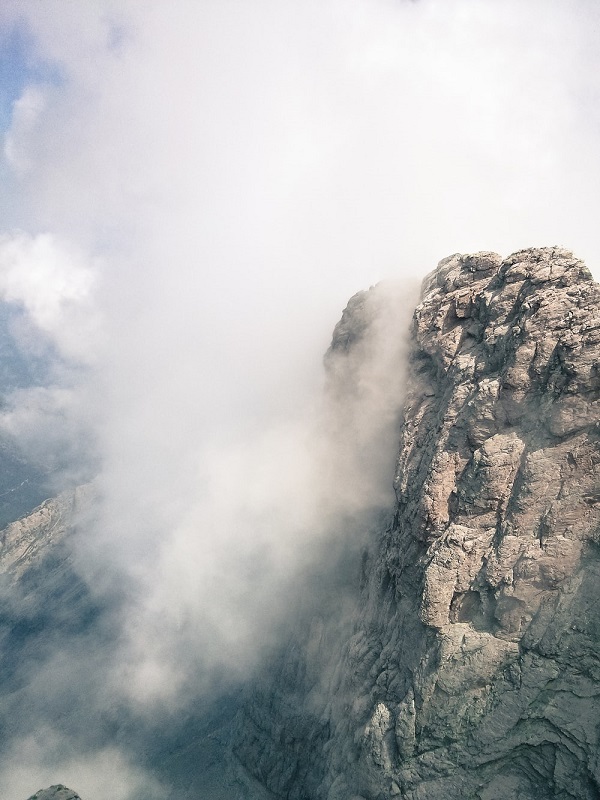
Sources
PS: The highest point of Mount Olympus is Mytikas (2,917 m).Olympus expands over approximately 500 km2 and covers an essentially circular area with a width of approximately 25 km and a circumference of 80 km.
Emmy Patsi-Garin: Επίτομο λεξικό Ελληνικής Μυθολογίας, εκδ. οίκος «Χάρη Πάτση», Αθήνα 1969
"Greekboston"
"Greek Legends and Myths"







